Month: May 2019
Joe Biden may resurface a long-held dream: a White House laser-focused on cancer
Lev Facher in The New York Times:
 WASHINGTON — Barely five months after his son’s death from brain cancer, a bereaved Vice President Joe Biden announced to the nation he would not run for president in 2016 — and immediately pinpointed his deepest regret. “If I could be anything, I would have wanted to be the president that ended cancer,” he said in a Rose Garden address in October 2015. “Because it’s possible.” Biden’s announcement that he will run for president in 2020, however, has resurfaced his dream: a White House that makes cancer a signature issue, backed by a politician whose life was so publicly upended by the disease. With much of the early debate in the Democratic primary centering on health care, Biden’s stint as cancer-advocate-in-chief and orchestrator of the Obama administration’s “cancer moonshot” could give him the opportunity to make the disease, its treatments, and his own grief central to the presidential election.
WASHINGTON — Barely five months after his son’s death from brain cancer, a bereaved Vice President Joe Biden announced to the nation he would not run for president in 2016 — and immediately pinpointed his deepest regret. “If I could be anything, I would have wanted to be the president that ended cancer,” he said in a Rose Garden address in October 2015. “Because it’s possible.” Biden’s announcement that he will run for president in 2020, however, has resurfaced his dream: a White House that makes cancer a signature issue, backed by a politician whose life was so publicly upended by the disease. With much of the early debate in the Democratic primary centering on health care, Biden’s stint as cancer-advocate-in-chief and orchestrator of the Obama administration’s “cancer moonshot” could give him the opportunity to make the disease, its treatments, and his own grief central to the presidential election.
After leaving office, Biden structured his cancer-fighting efforts in a way that could suit a possible campaign. The Biden Cancer Initiative — the pillar of Biden’s policy work since leaving office — raised $10 million in the year following its incorporation. The nonprofit did not accept contributions from pharmaceutical companies, in an effort both to preserve independence and avoid the political pitfalls associated with an increasingly vilified drug industry. The Bidens have fostered collaboration between stakeholders “at the foundation level, the patient advocacy level, the scientific level, and the government level,” said Dr. Elizabeth Jaffee, a Johns Hopkins researcher who sits on the Biden Cancer Initiative’s board.
More here.
Gabriel García Márquez in 1950s Paris

When I arrived in Paris, I was nothing but a raw Caribbean. I am most grateful to that city, with which I have many old grudges, and many even older loves, for having given me a new and resolute perspective on Latin America. The vision of the whole, which we didn’t have in any of our countries, became very clear here around a safe table, and one ended up realizing that, in spite of being from different countries, we were all crew members of the same boat. It was possible to travel all around the continent and meet its writers, its artists, its disgraced or budding politicians, just by making rounds of the crowded cafés of Saint-Germain-des-Prés. Some didn’t arrive, as happened to me with Julio Cortázar—whom I already admired for the wonderful stories of Bestiario—and for whom I waited for almost a year in the Old Navy café, where someone had told me he often went. I finally met him fifteen years later, also in Paris, and he was still as I’d imagined him since long ago: the tallest man in the world, who never decided to grow old. The faithful copy of that unforgettable Latin American who, in one of his short stories, liked to walk through the misty dawns to go and watch the guillotine executions.
more here.
Archie Butt, The Titanic, Related Matters….
Will Stephenson at The Believer:
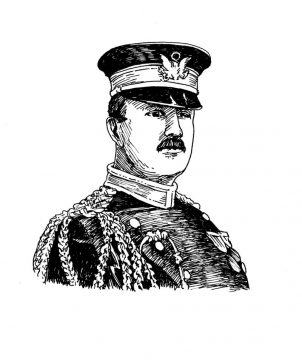 To President William Howard Taft, the most notable casualty of the Titanic was a person named Archibald Butt. “He was like a member of my family,” Taft said in his eulogy, “and I feel his loss as if he had been a younger brother.” Reading this, I feel a tinge of competitiveness with Taft, because Butt was a member of my family—he was my great-grandfather’s cousin. In the hallway bathroom of my childhood home, we had a framed Butt family crest he’d purchased and mailed home from Europe: a lion holding a broken spear. It always got a laugh, the solemnity of the image relative to the apparent stupidity of the surname: Butt. It seemed obviously ironic, like a poster you’d buy at a gas station.
To President William Howard Taft, the most notable casualty of the Titanic was a person named Archibald Butt. “He was like a member of my family,” Taft said in his eulogy, “and I feel his loss as if he had been a younger brother.” Reading this, I feel a tinge of competitiveness with Taft, because Butt was a member of my family—he was my great-grandfather’s cousin. In the hallway bathroom of my childhood home, we had a framed Butt family crest he’d purchased and mailed home from Europe: a lion holding a broken spear. It always got a laugh, the solemnity of the image relative to the apparent stupidity of the surname: Butt. It seemed obviously ironic, like a poster you’d buy at a gas station.
My great-grandfather was Jeremiah Butt, who ran a Schlitz beer outpost in southern Georgia and died at a Lutheran conference in Nashville when my father was four. A heart attack, while he was eating breakfast.
more here.
Bad Girls: The Rebels and Renegades of Holloway Prison
Mary Hannity at the LRB:
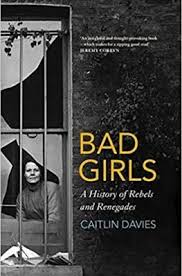 Between 1906 and 1914 hundreds of suffragettes were imprisoned and force-fed in Holloway. They turned their resistance to prison rules into a political programme. Suffragette prisoners were held separately and forbidden from communicating, but if one of them smashed a window to protest against poor air quality, for instance, the others would follow suit. They documented their treatment and smuggled out letters and diaries. The WSPU rented a house nearby, and used it as a base to communicate with the prisoners – and to throw bombs and bottles at the prison. Suffragettes were greeted on release by applauding crowds. The governor resigned. ‘If you are not a rebel before going into Holloway, there is no reason to wonder at your being one when you come out,’ wrote Edith Whitworth, secretary of the Sheffield branch of the WSPU. The imprisonment of middle-class women, which was unusual, helped draw public attention to the treatment of incarcerated women in general, and the suffragettes agitated for improved prison conditions. Davies gives ample attention to their use of Holloway as an icon of struggle: a Holloway flag was waved on suffragette marches; Christmas cards were produced with an illustration of the prison (‘Votes and a Happy Year’); there were Holloway diaries, demonstrations, songs and poems (‘Oh, Holloway, grim Holloway/With grey, forbidding towers!/Stern are the walls, but sterner still/Is woman’s free, unconquered will’).
Between 1906 and 1914 hundreds of suffragettes were imprisoned and force-fed in Holloway. They turned their resistance to prison rules into a political programme. Suffragette prisoners were held separately and forbidden from communicating, but if one of them smashed a window to protest against poor air quality, for instance, the others would follow suit. They documented their treatment and smuggled out letters and diaries. The WSPU rented a house nearby, and used it as a base to communicate with the prisoners – and to throw bombs and bottles at the prison. Suffragettes were greeted on release by applauding crowds. The governor resigned. ‘If you are not a rebel before going into Holloway, there is no reason to wonder at your being one when you come out,’ wrote Edith Whitworth, secretary of the Sheffield branch of the WSPU. The imprisonment of middle-class women, which was unusual, helped draw public attention to the treatment of incarcerated women in general, and the suffragettes agitated for improved prison conditions. Davies gives ample attention to their use of Holloway as an icon of struggle: a Holloway flag was waved on suffragette marches; Christmas cards were produced with an illustration of the prison (‘Votes and a Happy Year’); there were Holloway diaries, demonstrations, songs and poems (‘Oh, Holloway, grim Holloway/With grey, forbidding towers!/Stern are the walls, but sterner still/Is woman’s free, unconquered will’).
more here.
You’ve heard of ‘organs on a chip.’ Now ‘tissue chips in space’ test conditions in microgravity
Shraddah Chakradhar in Stat:
 An unusual bit of cargo was aboard the latest Space X mission to restock the International Space Station with essential supplies in the early hours of Saturday morning. Usually, these SpaceX launches carry clothes or equipment that astronauts aboard the ISS may need to fix minor issues. But this latest launch also included tiny structures — about as big as a USB drive — containing human cells and known colloquially known as “organs on chips” were launched into space as part of a new experimental program from the National Institutes of Health’s National Center for Advancing Translational Sciences. These tissue chips are designed, with the help of pumps and other fluidics, to mimic the function of an organ. They’re used to study a wide range of diseases as well as test potential treatments. Most of the experiments with tissue chips have been confined to Earth. But in December, the first of five teams funded by the NCATS program launched an organ chip containing immune cells into space. The chips from the four other teams — roughly 50 chips in total — were packed into shoebox-sized boxes, along with all the material to help keep them going and sent along on a space capsule called Dragon. And if all goes to plan, the ISS will capture the capsule this morning. Over the next few weeks, the teams behind these tissue chips are hoping to learn all about what space — specifically, microgravity in space — does to human cells. I chatted with Lucie Low, the program manager of Tissue Chips in Space, to learn more about the mission. This interview has been condensed and lightly edited.
An unusual bit of cargo was aboard the latest Space X mission to restock the International Space Station with essential supplies in the early hours of Saturday morning. Usually, these SpaceX launches carry clothes or equipment that astronauts aboard the ISS may need to fix minor issues. But this latest launch also included tiny structures — about as big as a USB drive — containing human cells and known colloquially known as “organs on chips” were launched into space as part of a new experimental program from the National Institutes of Health’s National Center for Advancing Translational Sciences. These tissue chips are designed, with the help of pumps and other fluidics, to mimic the function of an organ. They’re used to study a wide range of diseases as well as test potential treatments. Most of the experiments with tissue chips have been confined to Earth. But in December, the first of five teams funded by the NCATS program launched an organ chip containing immune cells into space. The chips from the four other teams — roughly 50 chips in total — were packed into shoebox-sized boxes, along with all the material to help keep them going and sent along on a space capsule called Dragon. And if all goes to plan, the ISS will capture the capsule this morning. Over the next few weeks, the teams behind these tissue chips are hoping to learn all about what space — specifically, microgravity in space — does to human cells. I chatted with Lucie Low, the program manager of Tissue Chips in Space, to learn more about the mission. This interview has been condensed and lightly edited.
What types of chips are going into space? And what conditions are they hoping to provide information about?
There’s a kidney kit that’s looking at osteoporosis and the formation of kidney stones. We also have a knee joint kit that will look at osteoarthritis. Then there’s a blood-brain barrier kit to look at neurodegenerative disease. And finally, a lung kit to look at the impact of pathogens on lungs.
More here.
Tuesday Poem
Otherwise
I got out of bed
on two strong legs.
It might have been
otherwise. I ate
cereal, sweet,
milk, ripe, flawless
peach. It might
have been otherwise.
I took the dog uphill
to the birch wood.
All morning I did
the work I love.
At noon I lay down
with my mate. It might
have been otherwise.
We ate dinner together
at a table with silver
candlesticks. It might
have been otherwise.
I slept in a bed
in a room with paintings
on the walls, and
planned another day
just like this day.
But one day, I know,
it will be otherwise.
Jane Kenyon
from The Academy of American Poems
Can the Local Community Save Liberal Democracy?
by Pranab Bardhan

As the job-displacing effects of markets and global integration and the cultural shocks of large immigration have rattled workers, particularly the less skilled ones, their reactive turn to populism in different parts of the world has dismayed liberals. This has been reinforced by resentment against centralized bureaucracies (not just in Brussels or Washington but also in Mexico City or Delhi or Jakarta) run by professionals and technical experts whose dispensations often ignore local realities and sensibilities. The alliance between liberals and workers that used to form the backbone of centrist democratic parties is getting frayed, as in the minds of many blue-collar workers the liberals with their mobile professional skills come across as privileged meritocrats and rootless cosmopolitans (‘citizens of nowhere’).
Global markets and mobility of capital have required standardization and harmonization of local rules and regulations, which some communities feel are ironing out their local distinctiveness and proximity-based personalized networks. Increasing market concentration in large corporate firms, their blocking of small business, capturing of state power in democracies through strong lobbies and copious election funding, and weakening of labor organizations and depressing labor share have made many small people precarious in their livelihood and suspicious of markets.
State-provided public services which are supposed to relieve the harshness of the market are everywhere riddled with bureaucratic indifference, malfeasance, and resistance to reform, while the better-off liberals are increasingly seceding from them. In developing countries the public delivery of social services is often so dismal (with inept, corrupt or truant official providers) that in contrast the image of voluntary community organizations (including charitable religious institutions run by Muslim, Hindu or Christian evangelicals) trying to fill in the gap is often much better than that of the state. Even when the state delivery mechanisms work reasonably well, the projects often do not involve the people but simply treat them as passive objects of the development process. (In rich countries communities have sometimes rejected negotiations over their heads by corporate and city officials to help investment in the community—as in the recent case of the failed Amazon investment proposal for Queens in New York). Read more »
Monday Poem
.
—Thoughts of 77 summer solstices,
hopefully anticipating 78
At a Point When All Things Reverse
.
situated between a pair of equinoxes
a blazing solstice— an apex of angles
and ellipses; parabolas scribed by
inertia and mass in a count of months
governed by curves of gravity
at a point when all things reverse
I sweat beneath a star so close
the joist slung across my shoulder
as I stride over dry earth to a nascent house
is as warm to my touch by its radiation
as the thought of you beneath my hand
Jim Culleny
4/27/19
Life and Death in New Jersey
by Ashutosh Jogalekar
 On a whim I decided to visit the gently sloping hill where the universe announced itself in 1964, not with a bang but with ambient, annoying noise. It’s the static you saw when you turned on your TV, or at least used to back when analog TVs were a thing. But today there was no noise except for the occasional chirping of birds, the lone car driving off in the distance and a gentle breeze flowing through the trees. A recent trace of rain had brought verdant green colors to the grass. A deer darted into the undergrowth in the distance.
On a whim I decided to visit the gently sloping hill where the universe announced itself in 1964, not with a bang but with ambient, annoying noise. It’s the static you saw when you turned on your TV, or at least used to back when analog TVs were a thing. But today there was no noise except for the occasional chirping of birds, the lone car driving off in the distance and a gentle breeze flowing through the trees. A recent trace of rain had brought verdant green colors to the grass. A deer darted into the undergrowth in the distance.
The town of Holmdel, New Jersey is about thirty miles east of Princeton. In 1964, the venerable Bell Telephone Laboratories had an installation there, on top of this gently sloping hill called Crawford Hill. It was a horn antenna, about as big as a small house, designed to bounce off signals from a communications satellite called Echo which the lab had built a few years ago. Tending to the care and feeding of this piece of electronics and machinery were Arno Penzias – a working-class refuge from Nazism who had grown up in the Garment District of New York – and Robert Wilson; one was a big picture thinker who enjoyed grand puzzles and the other an electronics whiz who could get into the weeds of circuits, mirrors and cables. The duo had been hired to work on ultra-sensitive microwave receivers for radio astronomy.
In a now famous comedy of errors, instead of simply contributing to incremental advances in radio astronomy, Penzias and Wilson ended up observing ripples from the universe’s birth – the cosmic microwave background radiation – by accident. It was a comedy of errors because others had either theorized that such a signal would exist without having the experimental know-how or, like Penzias and Wilson, were unknowingly building equipment to detect it without knowing the theoretical background. Penzias and Wilson puzzled over the ambient noise they were observing in the antenna that seemed to come from all directions, and it was only after clearing away every possible earthly source of noise including pigeon droppings, and after a conversation with a fellow Bell Labs scientist who in turn had had a chance conversation with a Princeton theoretical physicist named Robert Dicke, that Penzias and Wilson realized that they might have hit on something bigger. Dicke himself had already theorized the existence of such whispers from the past and had started building his own antenna with his student Jim Peebles; after Penzias and Wilson contacted him, he realized he and Peebles had been scooped by a few weeks or months. In 1978 Penzias and Wilson won the Nobel Prize; Dicke was among a string of theorists and experimentalists who got left out. As it turned out, Penzias and Wilson’s Nobel Prize marked the high point of what was one of the greatest, quintessentially American research institutions in history. Read more »
The Siren Call Of The Castaway
by Thomas O’Dwyer

The enigma of the castaway existed long before Robinson Crusoe was published 300 years ago in April 1719, but nothing had ever enthralled the growing reading public of his time like Daniel Defoe’s now classic novel. And, thanks to Defoe, the curse of the desert-island cartoon remains with us – a circular sandbank, a palm tree, a ragged castaway. All that’s required is for a New Yorker magazine funnyman to append an enigmatic or incomprehensible caption. The castaways too – sometimes called Robinsonades but don’t encourage it – are still with us. Tom Hanks communes with a volleyball in a film named, yes, Cast Away, and Matt Damon goes one-up on him in The Martian by claiming to be “the first person to be alone on an entire planet.” New movie variants on the theme have been released almost every year since the 1954 Adventures of Robinson Crusoe, Luis Buñuel’s first colour film.
So who reads the original Robinson Crusoe today? This book has been called the first English novel, or imperialist propaganda, or a textbook of capitalism. Since the nineteenth century, it has been a children’s book – more specifically, a boys’ adventure book, sitting on the same shelf as Treasure Island. A cursory search of Amazon’s statistics yields a surprise. Among many editions still on sale, the novel ranks number 358 in the Classic Action & Adventure genre, number 615 in Children’s Classics, and number 202 in the Kindle store’s Fiction Classics. Those are impressive rankings for an archaic seafaring tale that was first published 103 years after the death of William Shakespeare.
In academia, Robinson Crusoe has long been part of the debate on the origins of the first English novel. Of course, in Western literature, Don Quixote is the outstanding claimant, but Crusoe did set up the English narrative structure that authors have riffed on ever since. When Crusoe’s ink supply runs out on the island, the author noticeably transitions from writing a journal to crafting a novel. John Bunyan’s Pilgrim’s Progress was published forty years before Crusoe and was probably the last fictional, albeit devotional, work approved of by the various churches. After Crusoe came the deluge – Moll Flanders, Fanny Hill, Tom Jones, Vanity Fair, and hundreds more. To hell with devotion. The novels teem with flawed and moral castaways who must find salvation within themselves, if ever. Read more »
Perceptions
 Sughra Raza. Enlightened, April, 2019.
Sughra Raza. Enlightened, April, 2019.
Digital photograph.
Connections
by Mary Hrovat
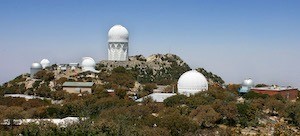 When I returned to school after my first marriage ended, I had to decide what to study. I’d been working toward a degree in history when I dropped out of a community college to get married, but I’d always been drawn to astronomy. One of the reasons I chose astronomy over history, or any other option, was that I felt that astronomy contained many of the other things I was interested in. To put it another way, I thought that if I didn’t study astronomy, I would regret it, but if I did study it, I wouldn’t necessarily lose touch with the other things I was interested in because they were all part of astronomy, in one way or another.
When I returned to school after my first marriage ended, I had to decide what to study. I’d been working toward a degree in history when I dropped out of a community college to get married, but I’d always been drawn to astronomy. One of the reasons I chose astronomy over history, or any other option, was that I felt that astronomy contained many of the other things I was interested in. To put it another way, I thought that if I didn’t study astronomy, I would regret it, but if I did study it, I wouldn’t necessarily lose touch with the other things I was interested in because they were all part of astronomy, in one way or another.
My degree is actually in astrophysics, and obviously it involved a lot of physics and mathematics. To see how the universe works, you have to understand gravitation, nuclear fusion, thermodynamics, atomic physics, and much more. In addition, to use and design telescopes and detectors, you need to know about optics, electronics, and materials science. Although I started out with very little background in math, I wound up with a minor in mathematics. By the time I had taken all the math classes required for the degree, and a fourth semester of calculus (which I hoped would help me understand my physics classes better), I was only three credits away from a math minor, so I took a class in linear algebra.
Astronomy also has obvious links to chemistry and geology. The story of the universe is, from one viewpoint, the story of chemical evolution, the development of more complex chemical elements as stars turned hydrogen and helium into more complex elements through nucleosynthesis. To study planets and moons, we can sometimes apply what we know about the rocks and weather and geological processes of Earth. Geology also comes into play in other ways. For example, one piece of evidence for the dinosaur-killing asteroid that struck Earth around 65 million years ago is a thin layer of iridium in Earth’s crust. Read more »
The Dark Dionysian: The Cathartic Pleasures of Live Industrial Music
by Joan Harvey

In the dark times
Will there be singing?
There will be singing.
Of the dark times.
(Bertolt Brecht)
I like the idea of Industrial music as a kind of corrupted psychedelia – the same derangement of the senses, but the childhood innocence has gone. (Comment on YouTube of Throbbing Gristle’s Discipline)
I respond this way again and again, always a split second after each fricative machine growl. Half dreaming now and forced into pure response, I regress. The animal brain writhes sensuously in its own mere selfness. I am at the edge of a pleasure rarely visited. The possibility of ecstasy—being out of myself—is nearly always either novel enough to marvel at (a strictly front-of-brain act) or strange enough to scare me back into my body. (Alexander S. Reed, Assimilate 304) [i]
Most people I know not only don’t care for this music, but probably dislike it intensely.
I can’t really imagine people who don’t already enjoy this sort of music walking into one of these events and actually having a good time.
Therefore proselytizing should probably not be my aim.
We want to share our pleasures and convince others, but sometimes from the beginning it’s a lost cause.
Still, its a part of my existence most people don’t see. And in a way it’s somewhat surprising to me.
Oddly, I began going to industrial shows rather late in life.
They’re more in the line of a thing a teen goth would discover.
When we’re lucky we continually discover new pleasures.
And with luck, many of them. Read more »
Catspeak
by Brooks Riley
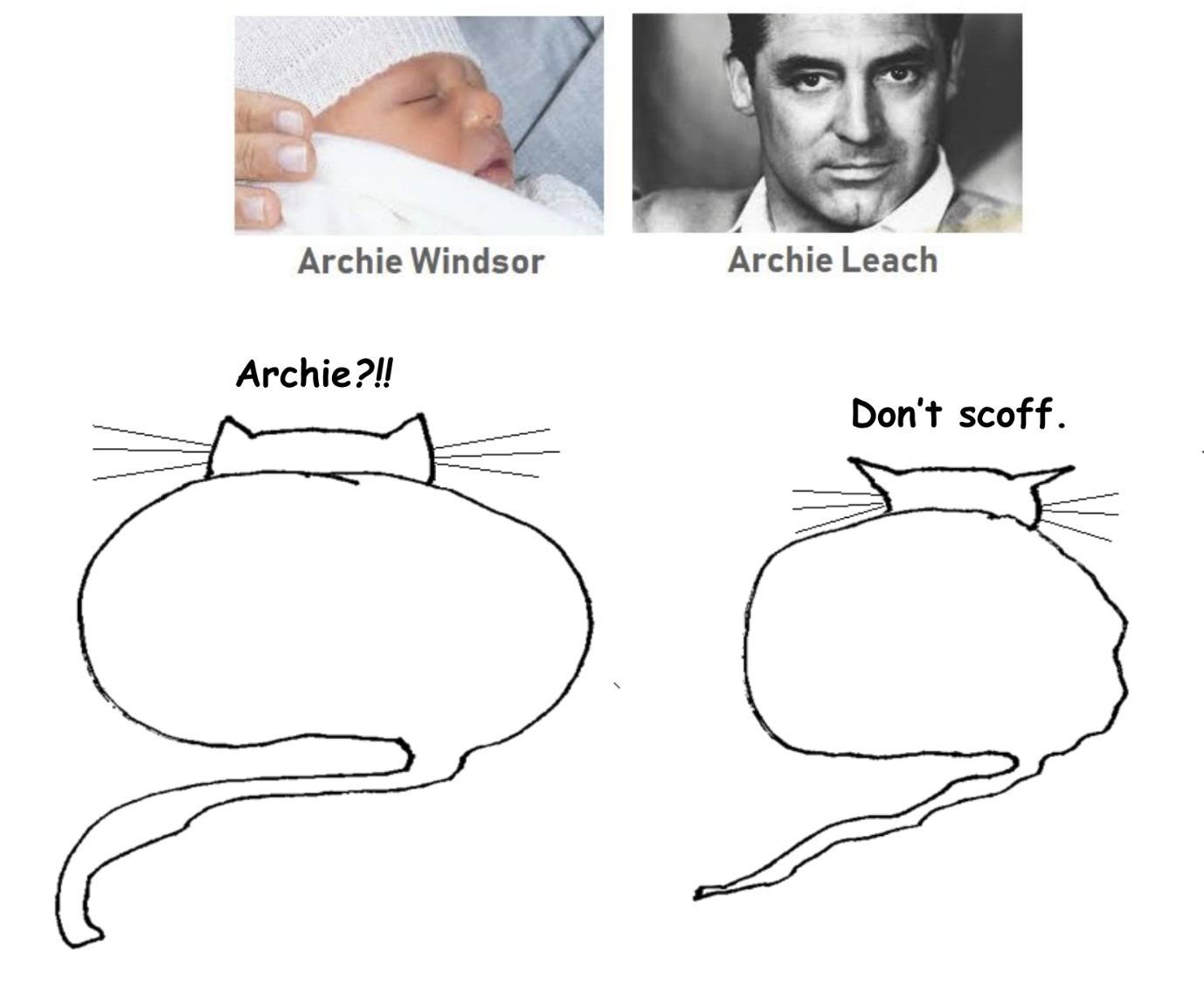
On Visiting Max Weber’s Gravestone
by Jeroen Bouterse

In the school vacation, I finally decided to go on what is probably my only-ever academic pilgrimage: I visited Max Weber’s tombstone in the Bergfriedhof cemetery in Heidelberg.
I had intended to go for some time. In my original plans, I’d go on foot (from the Netherlands) like a proper pilgrim, but after years of failing to go through I had come to realize that was not going to happen anytime soon. So I went by train. Which was too easy; I stood next to the monument before I knew it. I’m still coming to grips with the fact that only on the first time can you do a thing like this properly – that is, with enough ascetic self-denial to mark the purposefulness of your actions – and that I messed up that one chance.
Oh well. Isn’t it fitting to feel the charismatic potential of this particular relic being sapped by the very efficiency of modernity – the stahlhartes Gehäuse of the InterCity Express, working unfailingly to disenchant this tiny part of the world, too. Except for one detail, which I’ll get to later.
I fell in love with Weber as a history undergraduate. We read a fragment of the Protestant Ethic and the Spirit of Capitalism. The combination of a big and, not unimportantly, Western-centered thesis with detailed, painstaking social and historical explanations seemed a best of two worlds. More than that, Weber’s explanations, rather than reducing the ideas and deepest convictions of the people and movements he studied to some other variable, gave center stage to those convictions. He demonstrated that historical explanation involved understanding the beliefs and values laid down in historical texts, thereby at least partly justifying what I felt most comfortable doing. Read more »
Behind You
by Joshua Wilbur
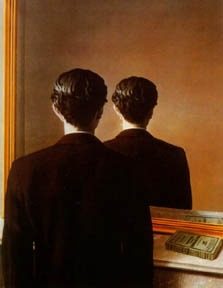
As you read these words, someone (or some thing) could be creeping up behind you.
Maybe you’re sitting at your desk. Or at your kitchen table. Or on a half-empty train. Behind you looms an encroaching presence, a silent observer. I picture a middle-aged man in a black suit — a tired and unfeeling assassin— but imagine whatever or whomever you like. A mythical monster, a scorned lover.
Someone might just be there. Right behind you. You won’t know for certain until you look.
* * *
We humans don’t have eyes in the back of our heads. Evolution didn’t budget for that luxury. Some animals—deer, horses, cows—have eyes on the sides of their heads, allowing them a wide field of vision. Other animals—humans, dogs, cats—have their eyes closer together and facing forward, allowing them to better judge depth and distance.
So while grass-grazers enjoy peripheral, panoramic vision their hungry hunters quickly spot them through dense forest. This suggests a simple rule of thumb for distinguishing the skulls of predators from those of prey: “Eyes in the front, the animal hunts. Eyes on the side, the animal hides.”
Eyes in the back, though, would require too many complex mutations, and we do well enough craning our necks to find food. Our bodies have been molded over millions of years to fulfill carnal desires, desperate for what’s in front of us: arms stretching out, noses protruding, mouths gnawing ahead. Biology has determined our fate as forward-oriented creatures and given us a great fear of that which lies outside our perception. Read more »
Monday Photo

Photo of moon with a jet vapor trail taken from my balcony in April of 2015.
Universal Medicare: Free Healthcare or Your Worst Nightmare?
by Carol A Westbrook

“Medicare for All” is a battle cry for the upcoming national elections, as voters’ health care costs continue to skyrocket. Universal Medicare, they believe, will provide free health care, improve access to the best doctors, and lower the cost of prescription drugs. Is it a dream, or is it a nightmare?
I am 100% in favor of universal health care, but believe me, it ain’t gonna be free. True, I’m not an economist–I’m a doctor–but I can do the math. I’ve had years of experience, both practicing under Medicare’s system and as a Medicare patient, and I understand something about health care costs. Few voters under age 65 understand what Medicare provides, and even fewer have a grasp on what it will cost the government–and ultimately the taxpayer–to extend it to all.
What Medicare provides for free is Medicare A insurance, which covers inpatient hospital, costs. To cover outpatient and emergency room visits, the senior must purchase Part B, which covers 80% of these charges. Medicare B costs $135/month plus a sliding scale based on income. Prescription drug coverage requires purchasing Medicare D from a private company. (Medicare C is alternative private insurance). Medicare A, B and D premiums are all deducted from the monthly Social Security check. Additionally, a senior may purchase a Medicare Supplement from a private insurance company, which covers the un-reimbursed Part A, and B costs. Confusing? Here are two examples. Read more »
Sneaky Bastard Words
by Gabrielle C. Durham
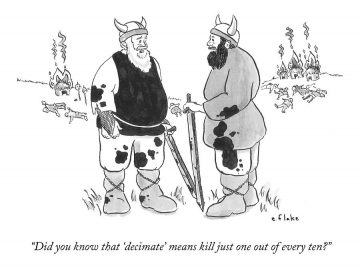 If you took Latin, then you probably have a larger vocabulary than the average bear, and you are more likely to have strong opinions on some words you vaguely remember based on Latin roots (cognates). For example, folks are more commonly using “decimate” to mean destroy or devastate, and it annoys the living materia feculis out of me. Decimate originally meant to kill every 10th person, based on the Latin word for 10 (decem), which is so oddly and satisfyingly specific. “Devastate” and “destroy” are already well known and used, so why do they need another alliterative ally in little weirdo “decimate”?
If you took Latin, then you probably have a larger vocabulary than the average bear, and you are more likely to have strong opinions on some words you vaguely remember based on Latin roots (cognates). For example, folks are more commonly using “decimate” to mean destroy or devastate, and it annoys the living materia feculis out of me. Decimate originally meant to kill every 10th person, based on the Latin word for 10 (decem), which is so oddly and satisfyingly specific. “Devastate” and “destroy” are already well known and used, so why do they need another alliterative ally in little weirdo “decimate”?
Another little sneak is “cleave.” Meaning #1 is to adhere tightly and closely or unwaveringly. Meaning #2 is to divide or split, to separate, or to penetrate a material by or as if by cutting or tearing. The second meaning is where we get “cloven” as in “cloven hoof,” the tool “cleaver,” “cleft” as in “cleft palate,” and “cleavage.” Both versions arose before the 12th century. The first meaning comes from Old English clifian by way of Middle English clevien. The second meaning comes from Middle English cleven from Old English cleofan and likely Old Norse kljufa, meaning to split. How can these words be so close for almost a millennium with polar opposite meanings? Read more »
